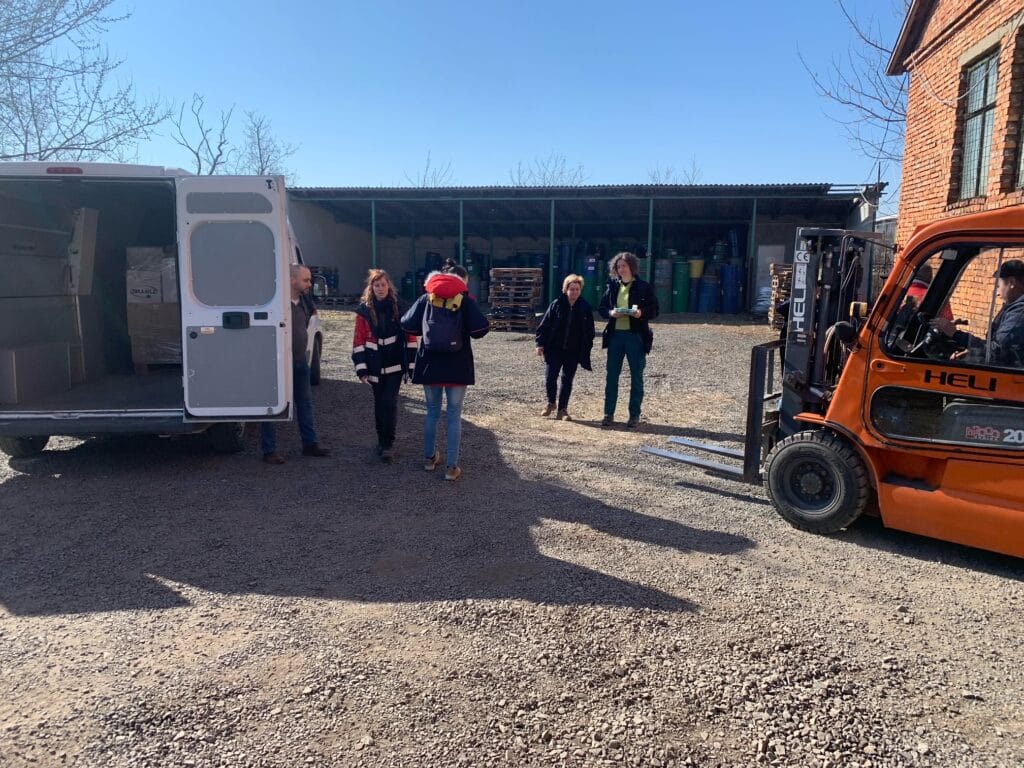Mali Selmentsi (Kisszelmenc in Hungarian). This Ukrainian village – where 90% of the inhabitants are of Hungarian descent – is forgotten by many and unknown to most. It is a very small settlement on the border between Ukraine and Slovakia. Until 2006 this village lived isolated from the world and was divided into two parts. In 1945, during the Soviet occupation, the village was divided in two and a sort of “Berlin Wall” was built, preventing family members from getting together as they used to. One half belonged to the Soviet Union and the other to Czechoslovakia. If relatives wanted to visit one another, they could do so using a 150 km detour, crossing two borders and facing a difficult visa procedure.
In 2006, a passage was finally opened, allowing pedestrian traffic from 7 am to 7 pm. After many decades, the residents of the divided settlement were able to re-establish daily contact.
On February 24 of this year, war broke out. A few days later, this border became one of the escape routes. The village has only a few hundred residents. Suddenly they were confronted with the presence of thousands of people filling the streets of the village to reach the European Union territory, entering Slovakia. Under the leadership of József Illár, the residents of Mali Selmentsi organized themselves to help the refugees by providing hot beverages and food. This was done out of their personal resources. A store owner at the border vacated his two-story store and made it available to provide warmth to the refugees, change babies’ diapers and shelter those who wanted to rest or were unable to cross the border. Heartbreaking scenes are commonplace here, as young mothers with their young children say goodbye to fathers returning to the war, since military-age men are not allowed to leave Ukraine.

The villagers welcomed and provided 24-hour assistance to the refugees with plenty of love and scarce resources. The Order of Malta Relief Corps from Berehove, 60 kilometers away and facing the same situation, extended their help. During the first days, “only” blankets were needed, because lodging, food and drink could be provided by the townspeople. However, in the process, the importance of adequate uniforms for the helpers became evident: the population was provided with warm uniforms, which came from the Order of Malta Relief Corps from Germany, thus establishing a presence of the Order on the Kisszelmenc border. Under the leadership of Viktória Illár, volunteers took part in the daily assistance given to between 1,000 and 1,500 refugees. In addition, there were two very important forms of contributions: First, the leaders and residents of the village of Páty, near Budapest, as well as the Catholic community, provided a substantial donation to help the refugees. Furthermore, the Maltese people of Berehove continuously sent everything the people needed from their own camp: clothes, food, diapers, toiletries, etc. The region ran out of various medicines, mainly insulin medications, which the municipality of Páty helped to procure.

On the Slovak side of the border, buses which had been provided by the mayor of the neighboring town of Velke Kapusany (Nagykapos) were waiting to take the refugees to a warm and safe place and help them reach their destination.
Volunteers continue to work steadily at this border. Tens of thousands of people have crossed it since the war began. In the last few days, the wave of refugees has slowed down with only a few hundred refugees arriving at night. The border is now a bit quieter, but who knows for how long.

